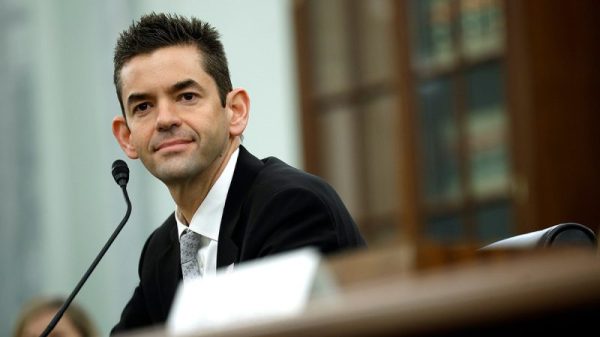In an effort to better understand the intellectual foundations of what eventually came to be known as Bitcoin, we have thus far explored those of the competition in currency proposed by economist FA Hayek and the idea of building a “Galt’s Gulch in Cyberspace” (an adaptation from Ayn Rand’s novel Atlas Shrugged). We then explored the anarchic roots from David D. Friedman — with important inputs from science fiction authors Robert Heinlein and Vernor Vinge. Each of these individuals was explicitly cited at least once by Timothy C. May who managed the Cypherpunk mailing list throughout the 1990s, where he built the case for some combination of online markets powered by strong encryption, a globally-interconnected public, an internet currency of sorts that would facilitate trade – and all capable of existing in a state of anarchy.
But to understand further, we must explore the intellectual influences that economists Lawrence H. White and George Selgin had on at least two of the more prominent Cypherpunks: namely Nick Szabo and Hal Finney.
Nick Szabo is the man responsible for engineering a couple of the attempts at an internet-native, privately-issued currency before Bitcoin: ‘The God Protocols’ (1999) and ‘bit gold’ (2005, now considered a direct precursor to Bitcoin). Hal Finney launched his own attempt in 2004 called ‘Reusable Proofs of Work’ (RPOW). None of these attempts at a digital currency was actually programmed up to a finished product; they were merely conceptualized in writing and (in RPOW’s case) minimal amounts of code. Despite neither Szabo nor Finney being cited in the Bitcoin whitepaper, Satoshi later stated that Bitcoin was an implementation of Szabo’s ‘bit gold’ (along with Wei Dai’s ‘b-money’). As for Finney, he also happened to be the first recipient of a bitcoin transaction, from Satoshi himself, and famously tweeted “Running bitcoin” on January 11th, 2009 – just eight days after Bitcoin went live. In sum, both Szabo and Finney made significant contributions to the evolution of ideas that inevitably led to what we now refer to as Bitcoin.
But to build a sound and scalable digital currency, one must not merely possess expertise in programming and cryptography. One must also understand what makes a good money in the first place. Szabo’s blog “Unenumerated” takes a deep dive into the history of money (among many other topics), and a widely-read piece of his (among bitcoiners and the like) “Shelling Out” contains references to the 19th century economist Carl Menger, who wrote about the spontaneous emergence of money. But interestingly, Szabo and Finney had also studied the work of Lawrence H. White and George Selgin.
White and Selgin’s influences on prominent Cypherpunks
One common research focus across the careers of White and Selgin is competition in currency, a theme pioneered by FA Hayek during the high inflation years of the 1970s, with his important book on the topic: The Denationalisation of Money.
In the 1990s, White and Finney had a friendly debate of ideas back-and-forth via three published articles in Extropy magazine. Finney argued in a 1993 article that the internet would enable the possibility of an internet native currency (not backed by fiat or goods in the real world); White replied in 1995 that he was skeptical, arguing the difficulty of getting away from the network effect of fiat currencies; Finney responded in kind in 1996.
In 2010, Finney referred to Selgin’s 1988 book The Theory of Free Banking as one of his own influences in the so-called “Bitcoin Forum”, a platform for discussion for early bitcoiners. “George Selgin has worked out the theory of competitive free banking in detail”, Finney wrote, “and he argues that such a system would be stable, inflation resistant and self-regulating.”
In an appearance on Peter McCormack’s What Bitcoin Did podcast in 2019, Szabo credits both White and Selgin for shaping his own thinking, explaining that:
“I was doing research on the history of money and working my way backwards, part of the history of money was private banking, where private banks would issue money, IOUs, bank notes and George Selgin and Larry White were the main people I read on that one. That was inspiring, but then you read later how it failed and it got usurped by central banks and then later on, maybe 100, 200 years later, the central banks get turned into fiat currency.”
Beyond the Cypherpunk mailing list, White and Selgin were all participants of a separate private mailing list with some of the prominent Cypherpunks called ‘Libtech’ in the late-1990s. Szabo recounts about the Libtech experience that “myself, Wei Dai, Hal Finney, Larry White, George Selgin and a few others were on a mailing list I created called Libtech and that’s where I came up with Bitgold [sic], and Wei Dai came up with b-money, and we had great discussions on there.”
In a 2019 Twitter thread, Szabo also credited both White and Selgin on both Finney’s and his own thinking about how a free banking system might work under a Bitcoin standard, suggesting that Layer 2 technologies such as the Lightning Network provide a more trust-minimized way of achieving it.
White and Selgin on Bitcoin
Both White and Selgin critique Bitcoin from different angles. With White, the ideal money is one with a stable purchasing power (a point repeatedly emphasized by Hayek), while Selgin’s ideal money “would stabilize nominal spending” (he tells me by email) “while allowing the price level to vary with changes in the state of total factor productivity.”
In White’s new book Better Money: Gold, Fiat, or Bitcoin?, he writes that “[because Bitcoin’s] supply curve is vertical, the impact of demand shifts is entirely on price and not at all on quantity. In this respect purchasing-power volatility is baked into Bitcoin’s design.” He goes on to say that “my own view is that the volatility of Bitcoin’s purchasing power makes its widespread use as a medium of exchange very unlikely… but only time will tell.”
Selgin calls Bitcoin a “synthetic commodity money” meaning that, like fiat, any non-monetary use is less obvious, but like a commodity it “is naturally or inevitably scarce.” (He considers “mere investment use” to be non-monetary). He also argues that the advantage of a synthetic commodity money “is precisely that by resorting to it one can avoid leaving the management of money either to central bankers or to the blind forces of nature. Instead, supply is determined once and for all by artificially arranged resource constraints.” He goes on to say that a “synthetic commodity monetary regime might perform better than either existing fiat money regimes or than potential commodity money alternatives” but emphasizes the unlikeliness of any government to adopt such a regime.
In 1989, White suggested the possibility of a monetary policy with a predetermined supply schedule, applying a solution proposed by Ronald Coase to the “assurance problem.” As explained in White’s new book, to understand the Coasean assurance problem, we can think of potential buyers that may be hesitant to purchase, say, artwork from an artist in the present, knowing that the artist can still later reproduce copies of the artwork and sell at a lower price to future buyers, yet at a price still above the artist’s marginal cost of production. One solution to calm potential buyers would be for the artist to number each piece of artwork (#7 of 100, etc.). Satoshi built a similar quantity commitment into Bitcoin’s monetary policy. White writes that “Despite recognizing, many years before the introduction of Bitcoin, that a quantity commitment device could in principle solve the Coasean assurance problem for a free-market irredeemable money, […] I did not foresee that the device could or would in practice be used to successfully launch a medium of exchange.”
However, in a presentation given to the Center for Market Education in Malaysia, White does concede that Bitcoin’s purchasing power volatility could dampen if its use as a medium of exchange would increase substantially as such use would mean less volatile demand. He also points out that banking on a Bitcoin standard would go a long way to help.
Conclusion
Lawrence H. White and George Selgin’s career-long efforts to understand better money ultimately served as contributions to the climate of ideas that inevitably shaped the thinking of at least two of the most prominent Cypherpunks – Nick Szabo and Hal Finney – who worked to make something like Bitcoin a reality in the first place.
Whether Bitcoin’s volatility will remain a stumbling block in the way of its eventual widespread adoption as a medium of exchange remains to be seen. As Bitcoin is a highly decentralized and an antifragile system with no real-world backed assets that can be seized to shut it down, and as it has already reached a fair bit of scale globally, it (to me) appears to be the only realistic candidate to (by “sly roundabout way”, as Hayek proposed) introduce something that government cannot stop. As such, volatility may be the price we pay to win the long game.
Author’s note: I have chapter 5 of Professor White’s book Better Money to thank for alerting me to several of the sources referenced in this article.




































